BY THE VILLAGE SUN | As part of her three-part “IHaveABody” East Village documentary project this summer and fall, on Aug. 13 Theresa Byrnes performed “Outline For a Tree” in East River Park.
Byrnes stood from her wheelchair to stand with the trees and with the community of people who have been protesting the city’s ongoing East Side Coastal Resiliency project. If carried out to its end, E.S.C.R. will kill the park’s remaining 500 mature trees — bringing the total tree carnage to 1,000.
The performance was in sympathy and compassion for the trees slated to be cut down and for those already lost in the two-phase project.
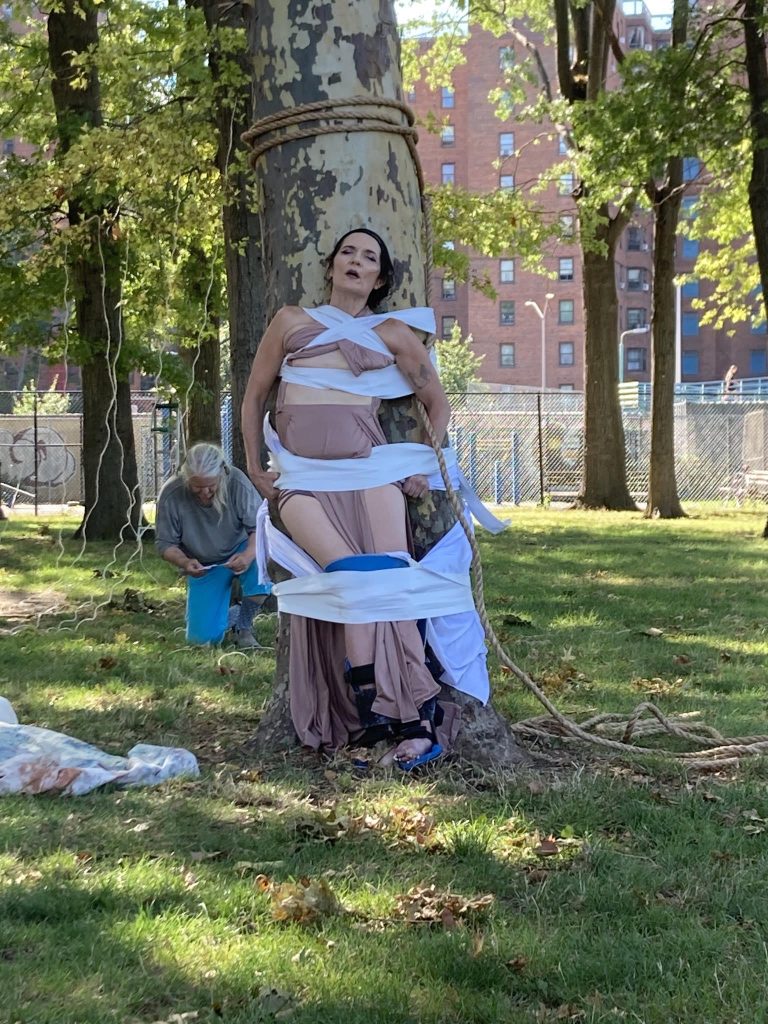
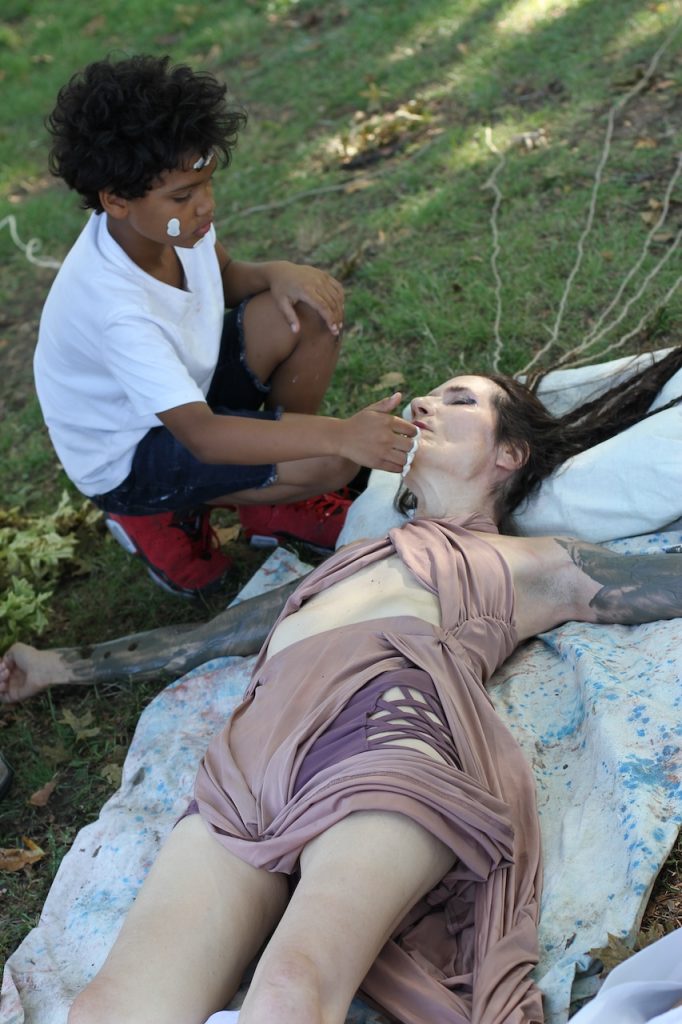
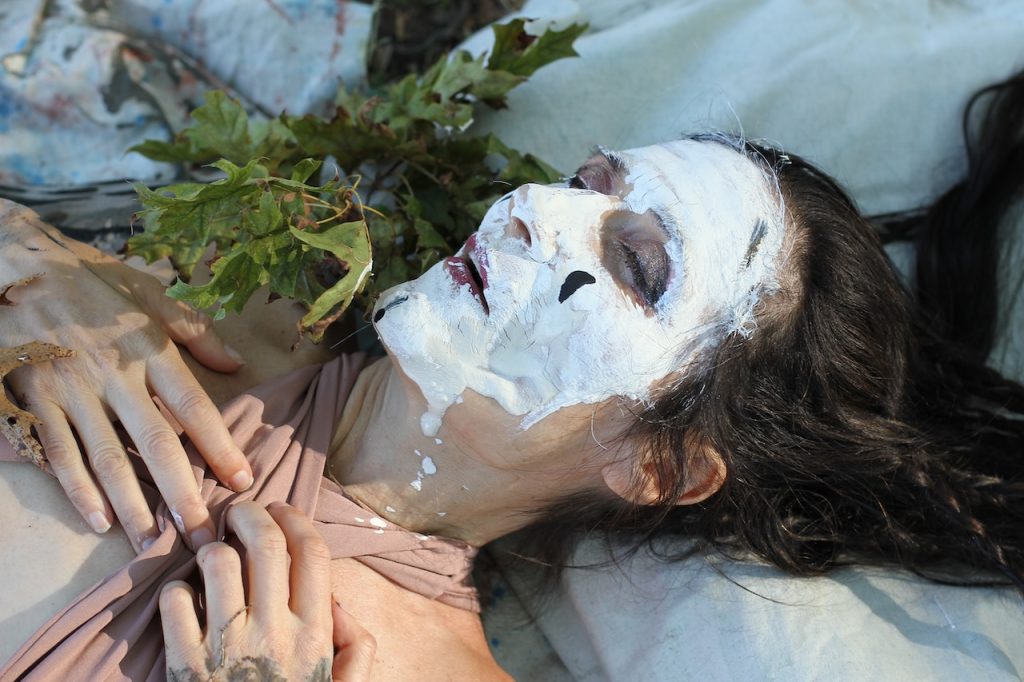
Five assistants — Sylver Pondolfino, Adriana Gallo-Sanabria, Eric Rossi, Roberta Bennett and Karen Steedman — helped Byrnes stand up and strapped her to one of the park’s majestic 80-year-old London plane trees still standing despite the city’s ruthless chainsaws. At the same time, Sparrow, her son, took the microphone.
“If you wrote an outline for a tree, of its essential role in creating and sustaining life — including absorbing floodwaters — we would certainly not cut them down but worship them,” the young boy read. “I bear witness to the destruction of New York City’s coastal ecosystem.
“Hope is almost lost that we can save the trees, but we can hold New York City accountable for the destruction and ongoing systemic oppression of the original stewards of this land, the Lenape People. Let’s rejoice in the trees, tap into their strength and bear witness.”
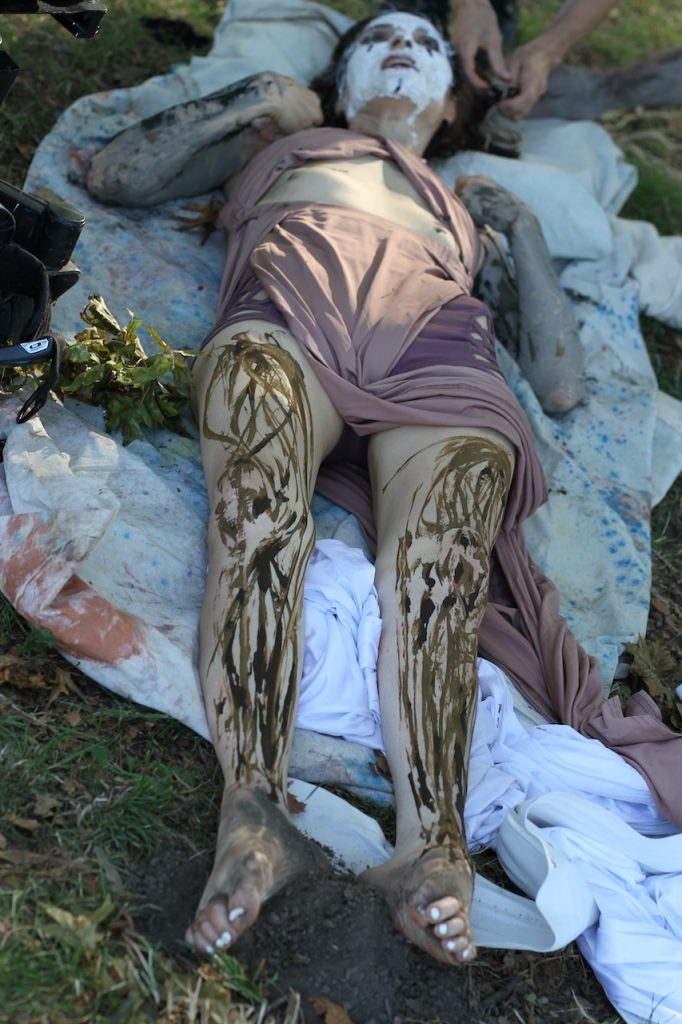
Byrnes — who has Friedeich’s ataxia, a genetic neuromuscular condition — stood with the tree for 10 minutes. Her effort made the audience also feel the desire to stand, amid the drone of a didgeridoo and the beat of a drum from musicians LLoyd Leary and Samora Fee.
Suddenly, she gently fell to the right of the tree. After a minute, her assistants laid her down flat. Lucy Crowley covered Byrnes’s feet with earth and then painted trees up the performance artist’s legs. Sylver put green clay on his arms and face and then on Byrnes’s arms. Sparrow put white clay on her face and some on his own face. Lucy applied black charcoal to Byrnes’s white face and green arms with a twig. Roberta lit sage.
Clay was offered to the audience to paint themselves with. Byrnes’s braids were tied to rope and then to the trees. The music intensified. The audience began to stomp and dance. One by one, her assistants lay down beside her. The audience followed and they all lay down together, bathed in the sound of the didgeridoo and drums. Finally the musicians also lay down.
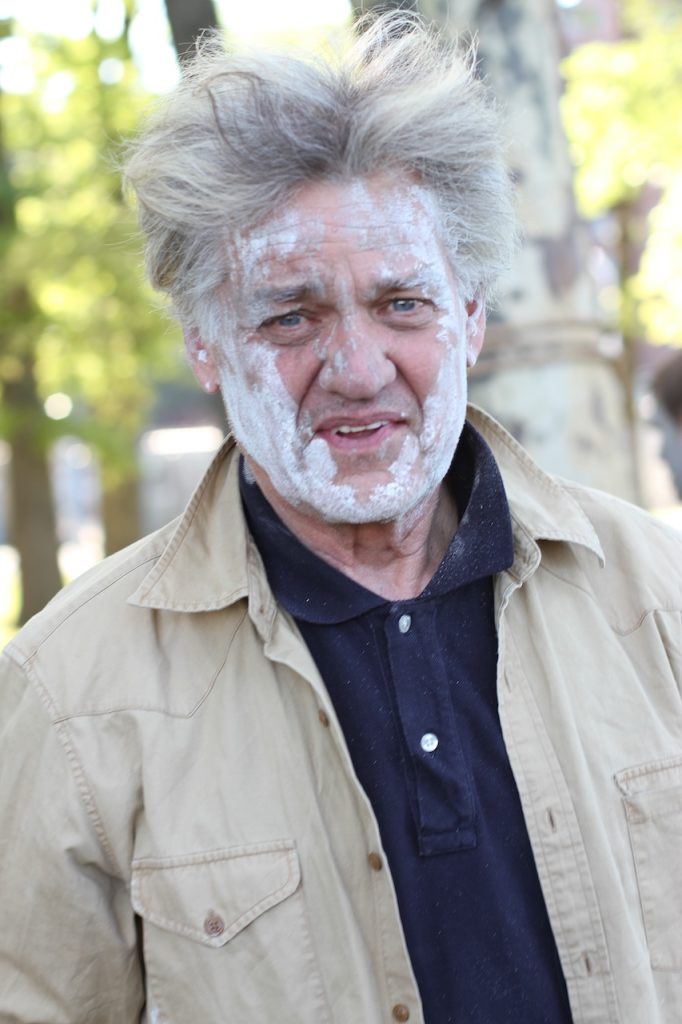
A tree branch fell gently from the tree to Byrnes’s right shoulder and cheek at the end of the performance, nudging her from meditative state.
“Outline For a Tree” was inspired by a dream in which Byrnes had trees painted up her legs, black and brown, with tall trunks and roots on her feet.
“While stirring from the dream,” Byrnes said, “I thought, ‘These are my ancestors and I must not forget them.’”
Australia native Byrnes’s park performance also commemorated the Bark Petitions of August 1963, the Yolngu Aboriginal people’s first formal attempt to have their land rights recognized by the Australian parliament.
Reverend Billy, who watched the East River Park performance said, “Theresa enters our neighborhood forest with her intimacy, with her vulnerable self…dreams, paint, voice…the movement of her body, and a story to tell with her co-author, the trees. Earthalujah!”

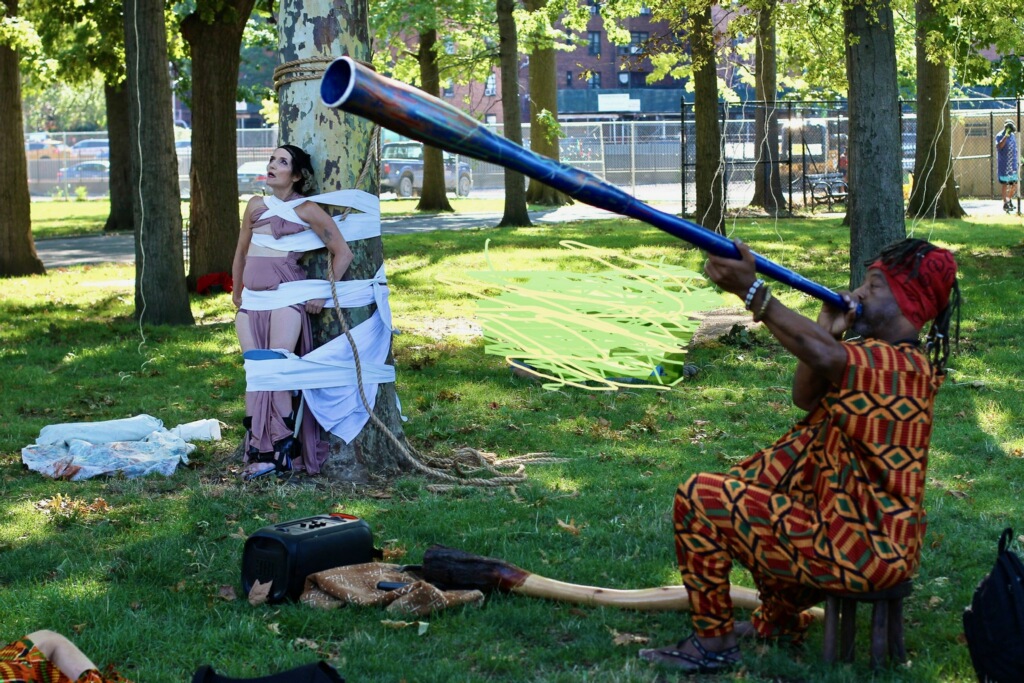
Be First to Comment